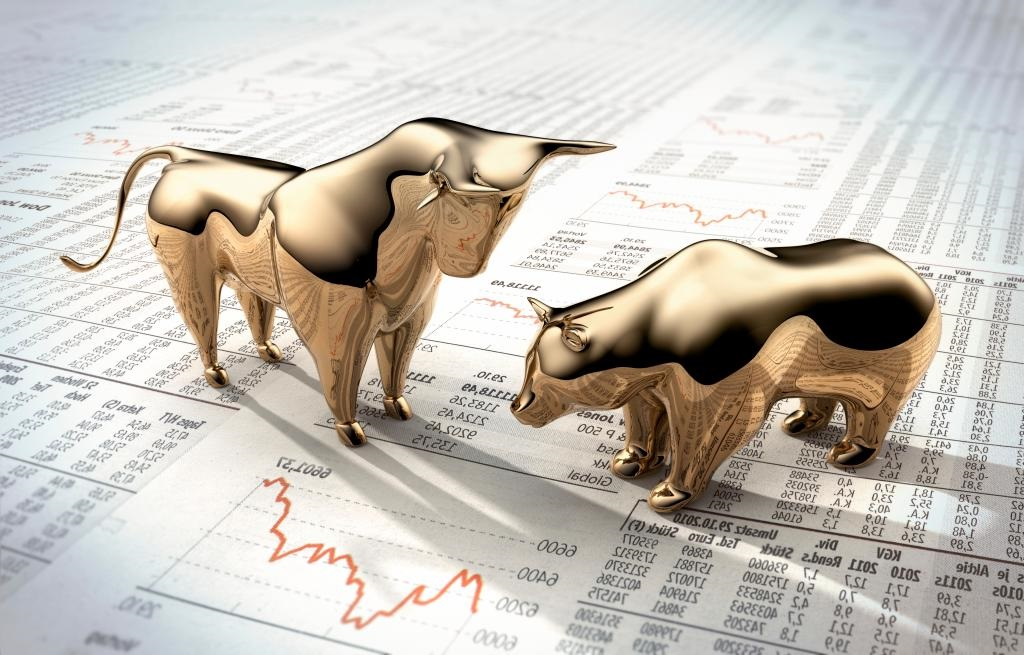Distinguished crypto investors are well accustomed to cycles of scorching hot summers. Those scorching hot summers are quickly followed by freezing crypto winters. Over the past few months, the crypto market has slowly been edging closer to bear territory. It’s safe to say that we’re clearly witnessing the presence of a bear market. The last bear cycle began in early 2018 and lasted around two and a half years. How long will this bearish cycle last?
In this article, RR² Capital outlines the fundamentals of a bear market.

What is a bear market?
A bear market refers to a market trend consisting of strong downward movements. During a bear market, prices significantly decline over a relatively short period of time. Generally, a market is classified as bearish when there is a drop of at least 20% over a two-month period, and prices continue to fall.
The most famous cryptocurrency bear market began in early 2018. During this bearish phase, investors witnessed the price of Bitcoin fall from nearly $20,000 to roughly $3,300 within a period of a year.
What causes a bear market?
Various factors may come into play, initiating a bear market cycle. Generally, wars, political or economic instability and global crises may cause the start of a bear market. In the crypto industry, however, it is incredibly difficult to predict when a bearish trend will start based on trend history.
The crypto market is still relatively young and extremely volatile, whereas other financial markets, like the stock market, have already been around for many decades. There is, therefore, far more historical data to lean on, when technical analysts set out to predict trends or market moves.

Reasons for the current bear market
Many experts point to a variety of reasons for the current crypto bear market. These include the war in Ukraine, high inflation and global monetary policy. In addition to these macroeconomic reasons, fear in the crypto market has been thriving as of late. The collapse of the Terra ecosystem deeply affected investor confidence causing the market to free fall.
Characteristics of a bear market
Bear markets are typically characterized by the following:
- Continuously decreasing prices over a long period of time.
- Lack of investor confidence.
- Low trading volume.
- Low liquidity.
- Greater supply than demand.
- Criticism by the media.
A brief history of Bitcoin bear markets
If you’re a newbie crypto investor, you may feel like the current bear market cycle is never-ending. Fortunately, history shows that this is highly unlikely. Bitcoin and digital assets have been declared dead hundreds of times by various prominent investors throughout the years.
If you’re hearing this for the first time, don’t be startled or scared into selling all of your crypto holdings.
Let’s take a look at some of the previous bear markets that the crypto industry has overcome.
The 2012 Bitcoin bear market
The veteran crypto investors will remember 2012 as the year Bitcoin had its first major bear market. A flurry of hacks and negative events contributed to this bearish cycle that lasted about six months.
The 2014 crypto bear market
2013 was a significant year for the crypto industry. In late 2013, Silk Road, a digital black market platform popular for hosting money laundering activities and illegal drug transactions, using Bitcoin, was shut down by the FBI. This bear market lasted roughly thirteen months.
2018 crypto bear market
2018 was the most publicized year for crypto to date. At the time, many referred to it as the bursting of the crypto “bubble.” After reaching all-time highs of nearly $20,000, the price of Bitcoin fell by over 80%.
The public confidence was heavily affected by the downward spiral causing prices to plummet even further. This was the longest crypto bear market to date, lasting roughly two and a half years.

How long will the crypto bear market last?
Understandably, many investors have seen their crypto portfolios decimated by this bearish period. Most investors wonder if this crypto winter is going to last as long as the last crypto winter.
Exploring previous market history
If we look at the past few years, the crypto market has generally followed a four year cycle. While this is promising, it’s extremely difficult to predict how long the bear market will last. There are patterns that we can use to make estimated guesses based on past performance. It’s difficult to do so accurately, especially considering what the world is experiencing right now.
This, however, is not negative. Bearish markets are a normal part of investment cycles. You need not be alarmed. Cryptocurrency and blockchain technologies have made incredible progress over the past few years. The crypto industry is here to stay.
If we were to try and forecast the market movements at this very moment, we should expect the remainder of 2022 to remain bearish. We could, however, have the opportunity for another bull market in 2023. Only time will tell.
How to handle a crypto bear market?
As a crypto investor, you’re probably wondering how you’re going to survive this crypto winter. We’ve outlined some of the best strategies to help you survive a prolonged bear market, ensuring you’re ready for the next bull market.

Don’t panic sell
The best thing you can do to survive a bear market is to remain calm and avoid panic selling. We’re not saying that you should never sell. We’re simply saying that you should never panic sell. There are only two reasons why you should ever sell your crypto holdings. These are:
- You’ve decided to take profits.
- You no longer believe in the fundamentals of a project.
Selling during a bear market will likely only further your losses and sever your chances of any potential recovery. If you’re worried you may be tempted to panic sell, rather don’t look at the crypto prices for a while.
Buy the dip
While bearish markets can be stressful for investors, they are often viewed as great investment opportunities to buy in at significantly lower prices. When asset prices are low, this creates more opportunity for investors to profit.

After all, if your investment strategy is longer-term, buying during a bear market can pay off when the market cycle reverses. If the recent crash has given your confidence a knock, then buying the dip may not be a great idea for you. If, however, you’re still comfortable buying more, then go for it.
Always remember to never risk more than you’re willing to lose on any investment. The crypto markets are not the same as traditional markets when it comes to volatility. The crypto market tends to be incredibly volatile in both bull and bear markets.

Dollar Cost Averaging (DCA)
Dollar cost averaging (DCA) is an investment strategy whereby an investor will buy assets in smaller increments over a period of time. DCA is often used to try to offset any negative effect on an investment caused by short-term market volatility.
DCA uses the approach of averaging out the price. This means that, on average, an investor will get more Bitcoin for their money if they were to use DCA, when compared to when they were to use their full investment amount in one transaction.
Shorting the market
Bull markets are not the only time when investors can make money. Investors can also make money during bear markets by taking out short positions on an asset, in an attempt to profit from the falling prices.
Shorting is, however, only recommended for experienced traders. It’s important to always remember that crypto trading involves risks. Always trade responsibly and manage your risk properly.
At RR² Capital, we’re a pioneering Venture Capital (VC) firm empowering the ‘new internet’. To date, we’ve successfully invested in over 140 projects. Our mission is to capture value by investing in early stage projects and teams who are leading innovation and disruption within the Web 3.0 world.
For more information about RR² Capital and our expansive disruptive technology-focussed investment portfolio, visit our website here or send us a mail here.

